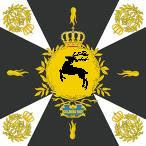I remember my younger days, when I first got into wargaming. The starting point was Games Workshop, which I would suggest is how the vast majority of people who wargame in the UK at least first get their introduction to the hobby. For those in the USA and other places, I don’t think you can really overstate the dominant position that GW has for the hobby in the UK – it gets a lot of flak from the hard-core brigade, but the simple statement of fact is: if you go to a high school in Britain, odds are that at least some of your friends (or friends of friends) will play GW games, giving you probably your first introduction to the hobby.
Whether they stay with it is open to debate (as per the discussion on the Yahoo Old School Wargaming Group) – I certainly didn’t when I went to university, but as I matured (or at least aged) I kept the formative experience and ultimately enjoy the hobby in other forms. No more Orcs for me these days on the tabletop, (although I retain a certain guilty fondness for the pulp novels GW release.) Anyway, I’m getting distracted here, so I’d better stop before I begin ranting about how “in my day GW was seriously ‘punk-ish’ and edgy, with some real dirt under it’s fingernails, before it got all commercial and cartoonish and too polished. Sell-outs!” (oh dear, too late…)
Right, I’ve calmed down now. My point was that I can remember that one of the things I owned for Warhammer in the early 90’s was a book of siege rules, and a large polystyrene castle for use in the game. It was a set of square towers and wall section to make your own medieval fortress, which you could fill with some figures, plant a bunch more outside, and then enjoy as they knocked seven bells out of each other. Trying to get footholds on the walls with ladders, being showered with crossbow bolts as they launched frenzied assaults on the waiting defenders, and – the inevitable climax – the mass slaughter that always ensued when a breach was made in the walls and the tiny restricted space was packed with mobs of screaming, armoured, axe-wielding maniacs intent on spoiling each others’ day. Brilliant.
I think there’s definitely something more dramatic to it. You can see it in other areas, like fiction, all the way from ‘the Iliad’ to the ‘Lord of the Rings.’ The tension of the two armies in close proximity, the various tools and techniques each side can select to use on the other, and the frantic bursts of action when some feature of the defences is disputed. It ‘works’ in a fundamental way, also on the tabletop, heightening the drama. A conventional battle in the open can sometimes struggle to compete.
The ‘catch’ to all this is that siegecraft in the 18th Century had evolved into a very different beast, with it’s own peculiar set of techniques and methods. I had heard of Vauban and knew he had refined a whole new method, but I didn’t understand what it was. I finally found out more over time, from the excellent (although imperfect) explanation and example supplied with the rule set ‘Warfare in the Age of Reason’ that I first got in the early 90’s; books on sieges by Christopher Duffy; and the growing resources of the internet. What follows is based on the loose and imperfect info I’ve gathered over time from here and there. I don’t claim to be any sort of expert, but all I can say is: it’s the sort of guide that I really wished I had when I was younger. Hopefully it may be of interest and inspiration to others.
Subscribe to:
Post Comments (Atom)


3 comments:
I bought the Warfare in the Age of Reason set last year and although I wasn't that impressed with the battlefield rules (12 figure infantry units? I think not...) I agree, the seige rules look quite spiffy. I'm looking forward to seeing how they play out for you.
Might I recommend you read "The Commodore" from C. S. Forester's Hornblower series? It covers the seige of Riga and although it's fiction, it's very atmospheric in the way you describe.
While I got my earliest start with Airfix minis and books by Featherstone from the public library I later moved on to GW fantasy minis and still have a large number of them (and every once in a while get a new dwarf or somesuch to paint).
I remember those old siege rules (if it's the set I'm thinking of it had a section on building various fortresses for the various WH races), but never got around to playing them.
Hi, and thanks for the recommendation of "The Commodore" - I'll have a little look about for that. In fiction, I seem to remember Bernard Cornwell's "Sharpe's Seige" as also being pretty good.
Post a Comment